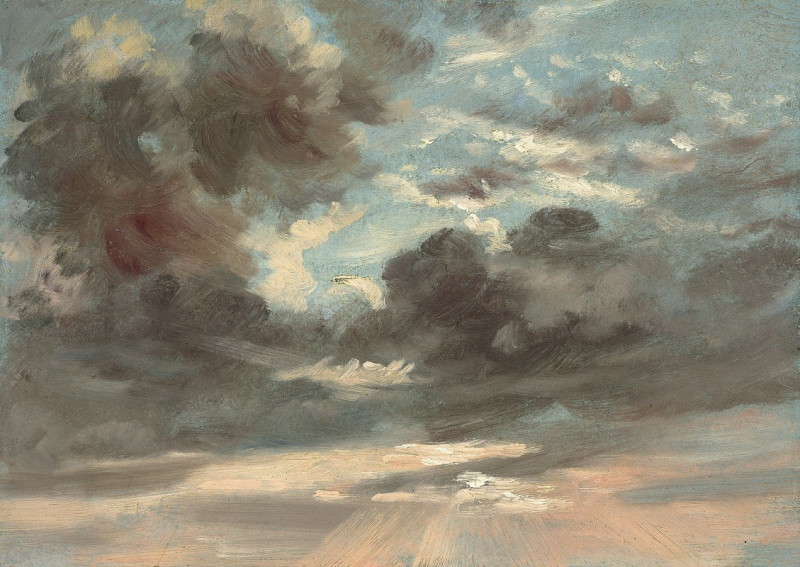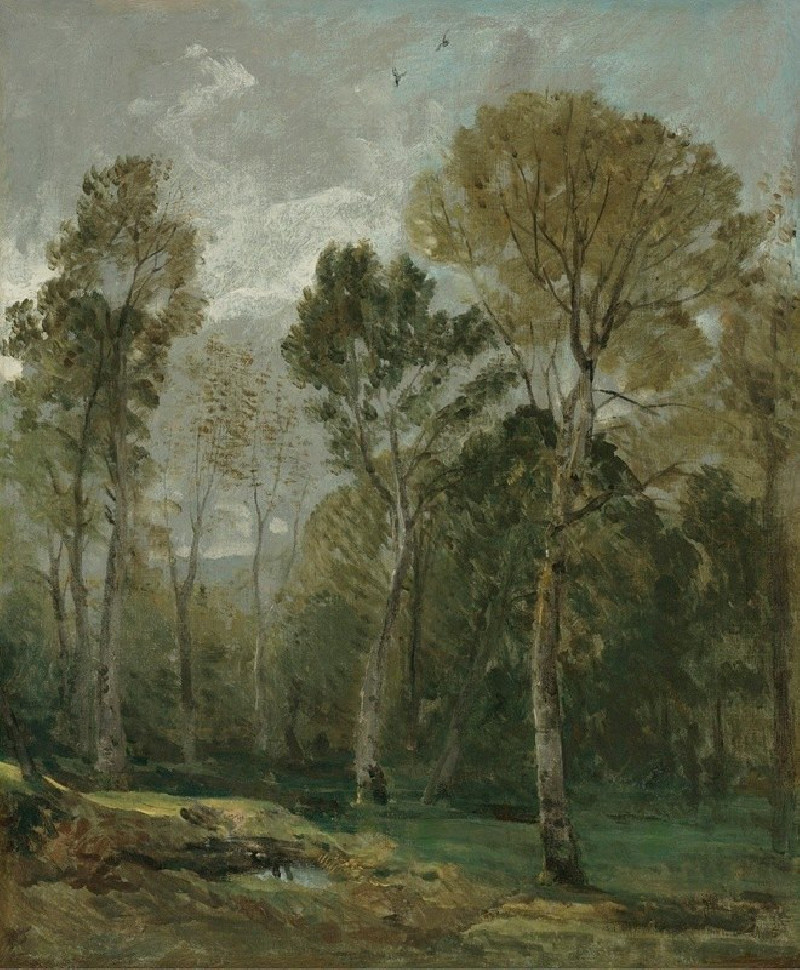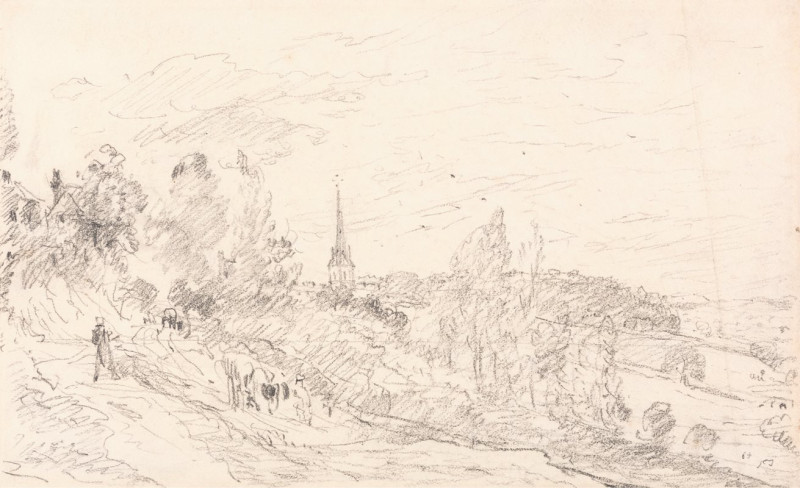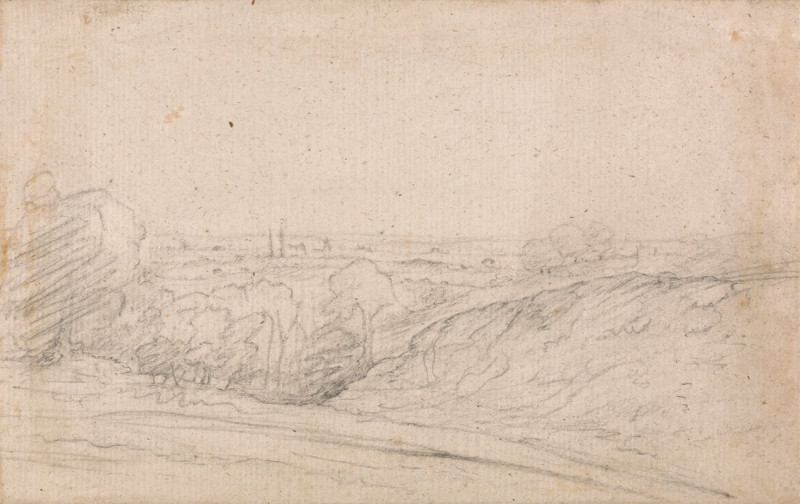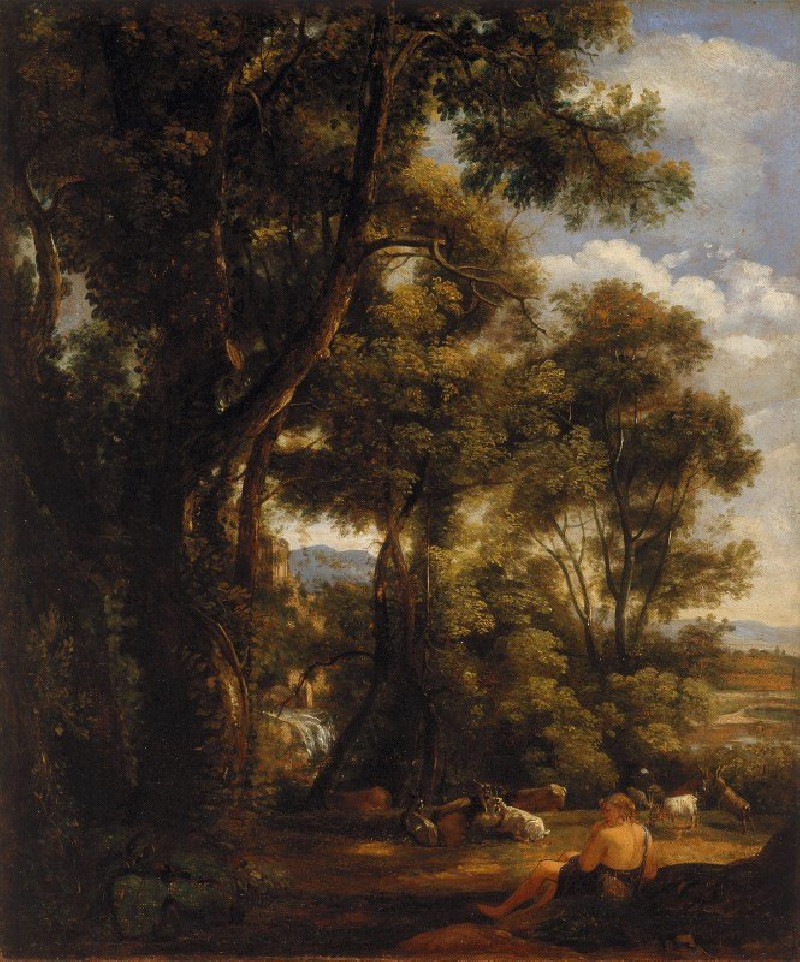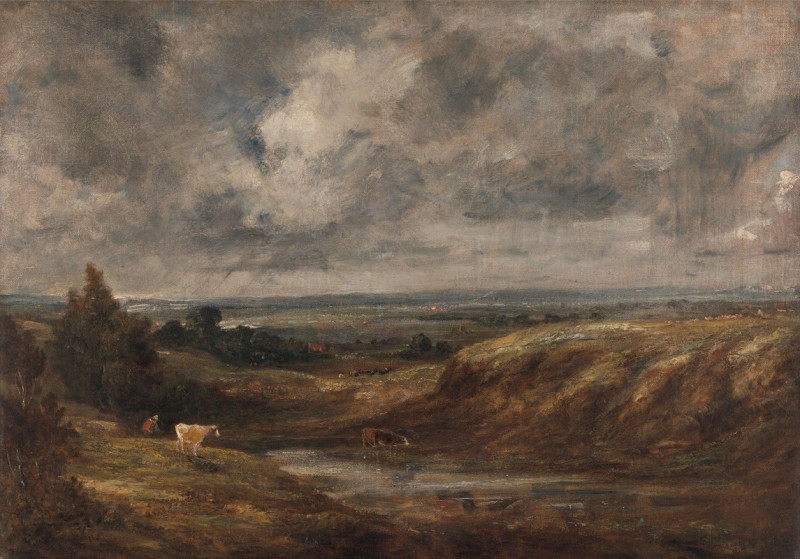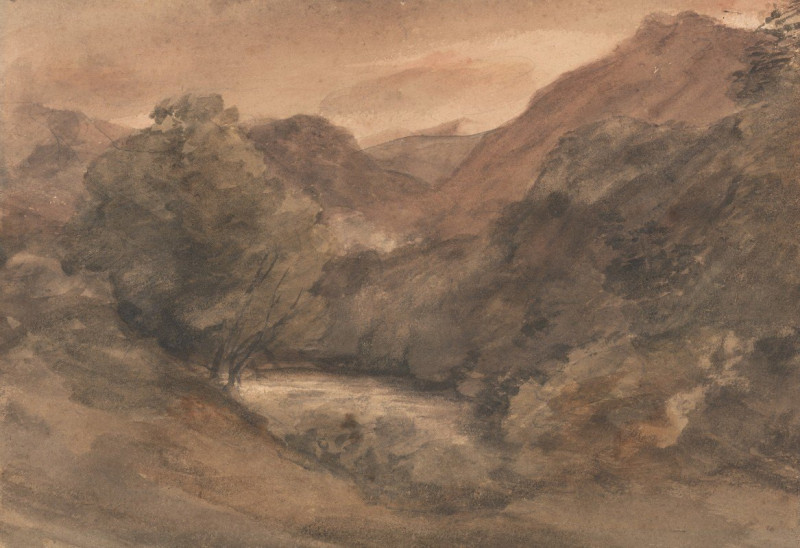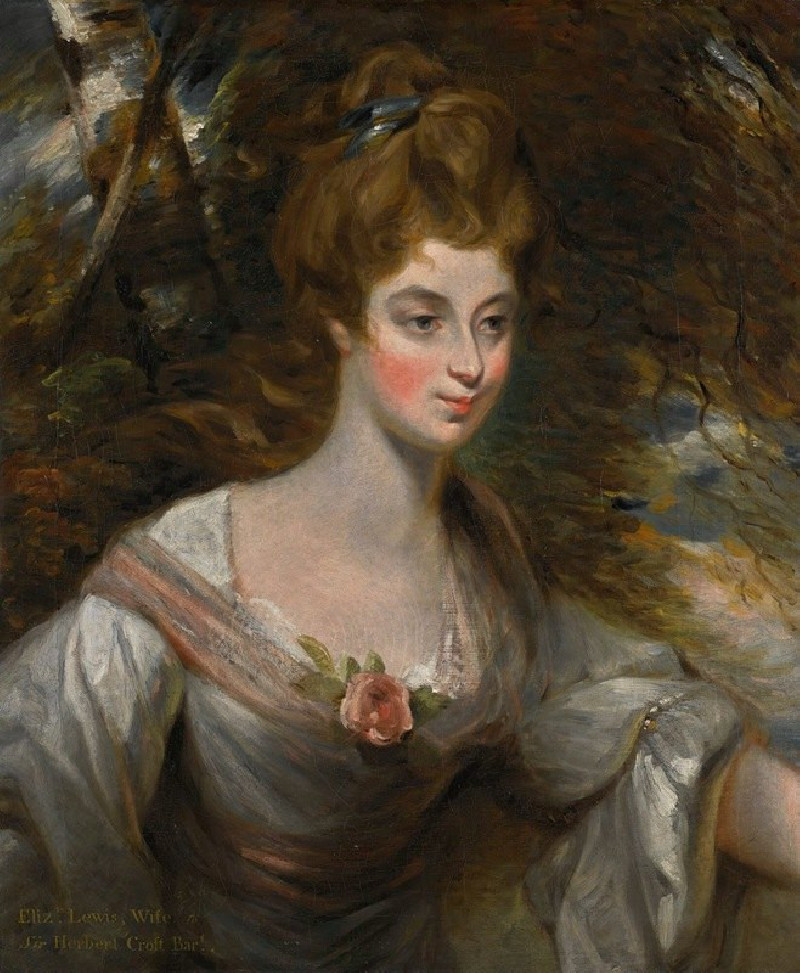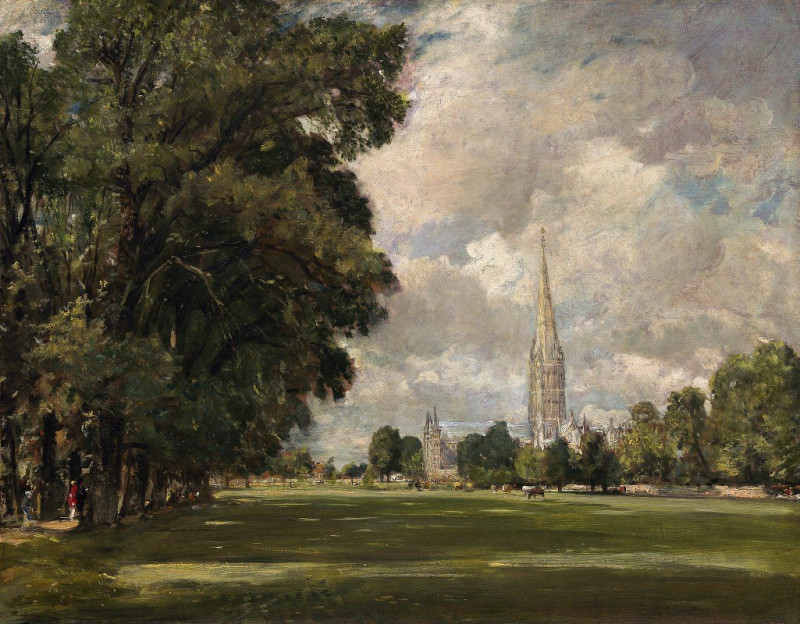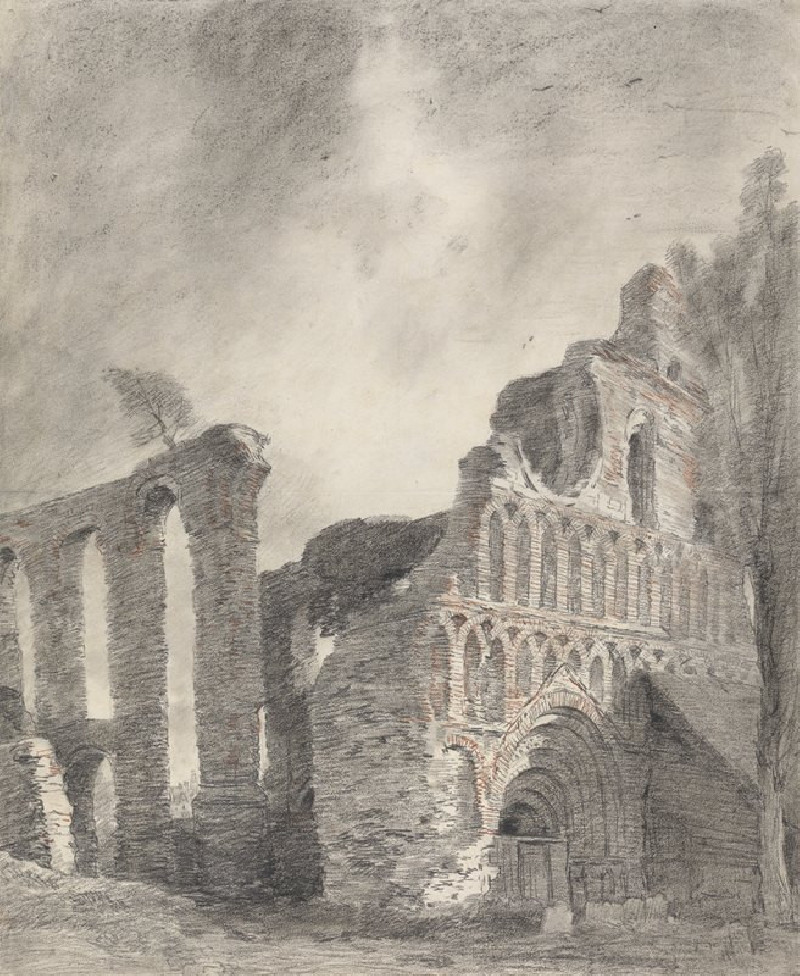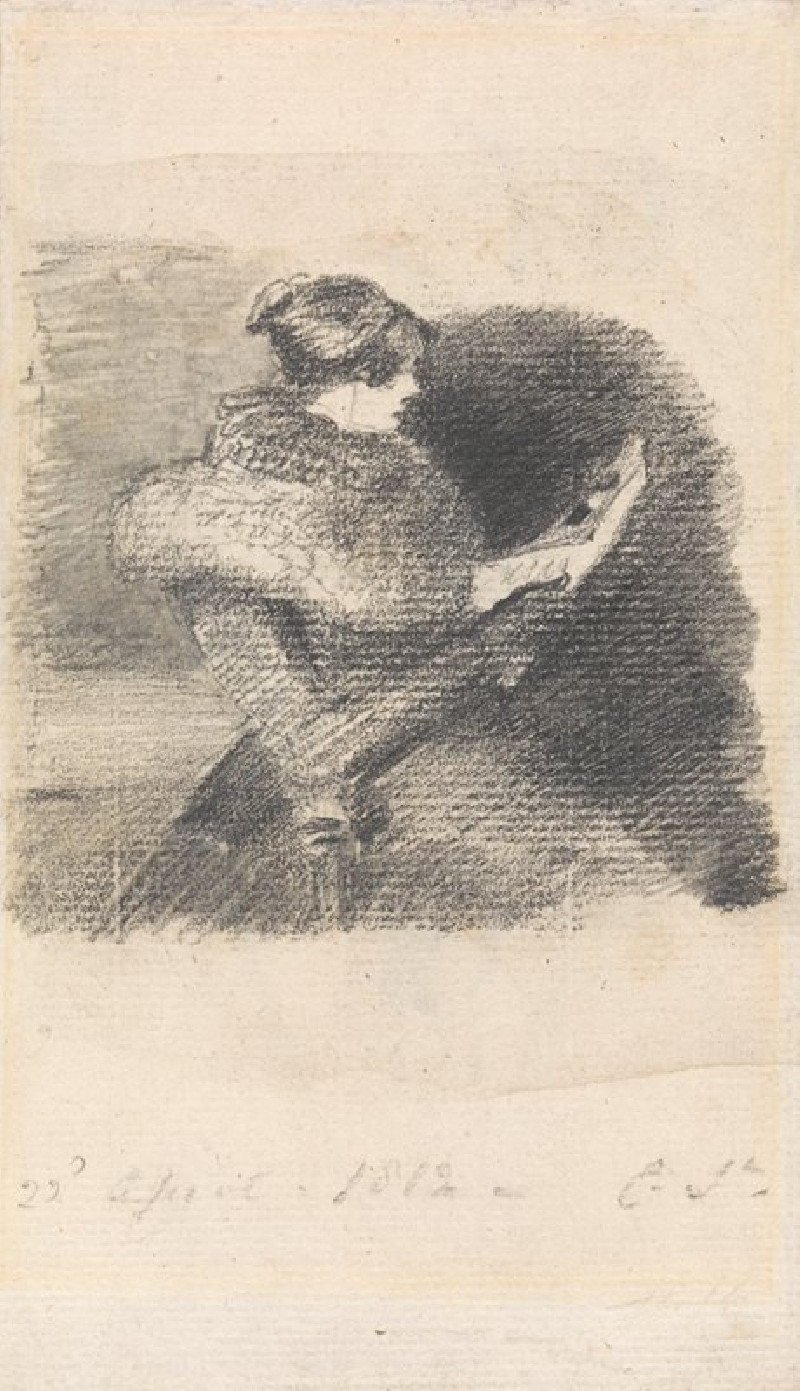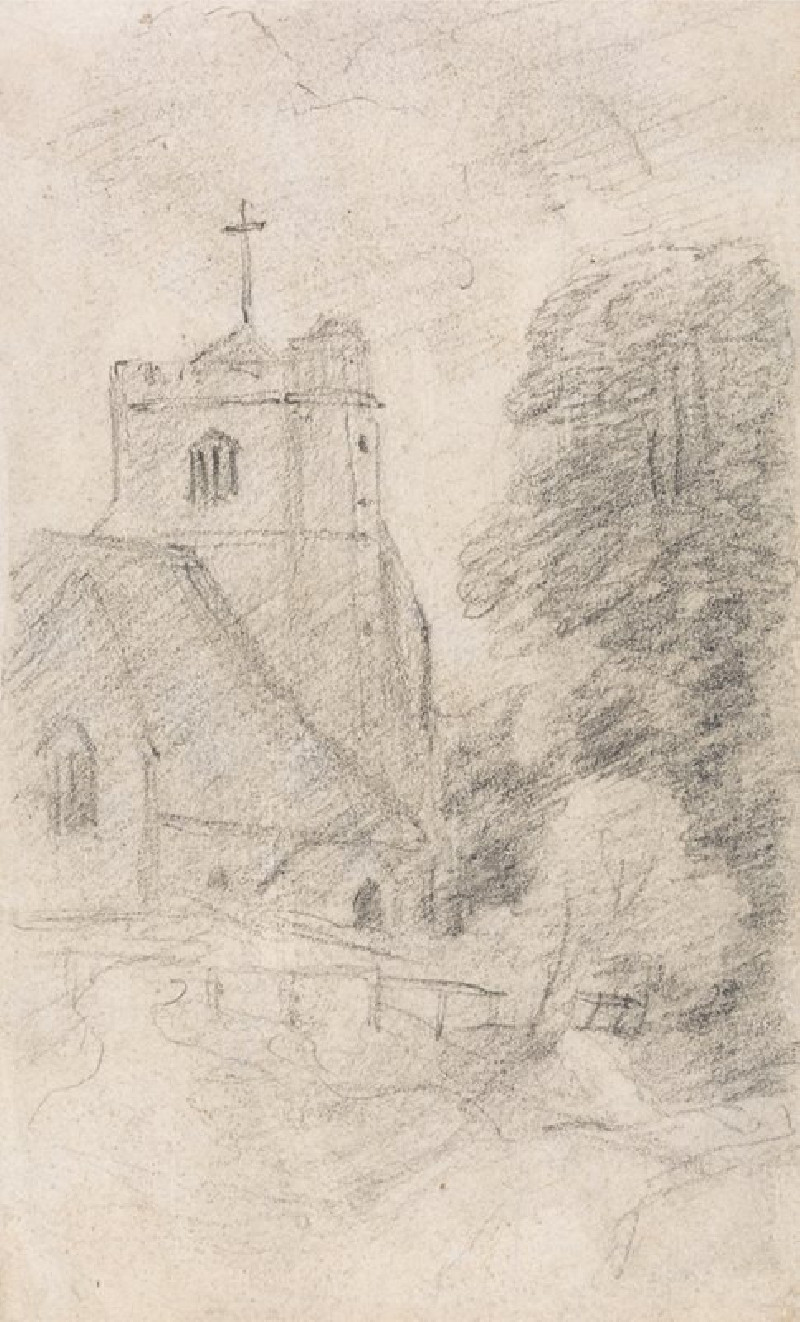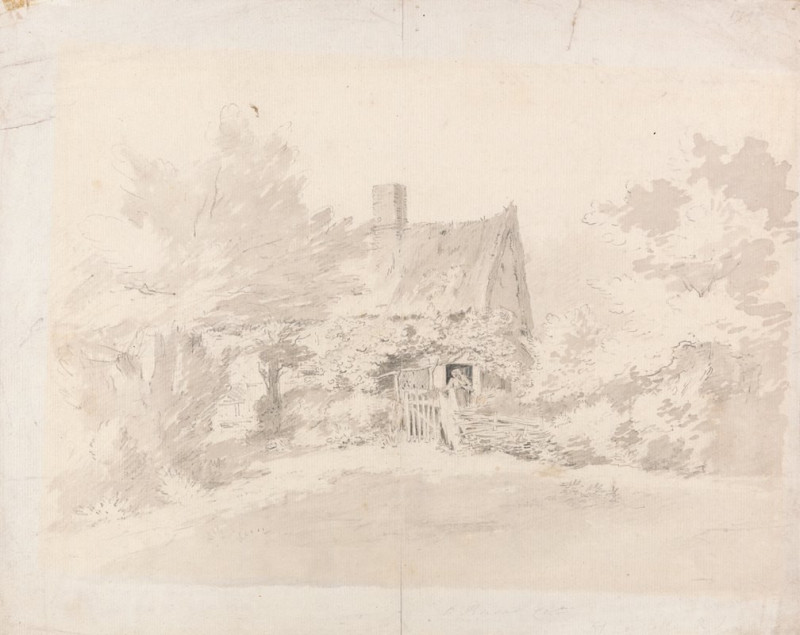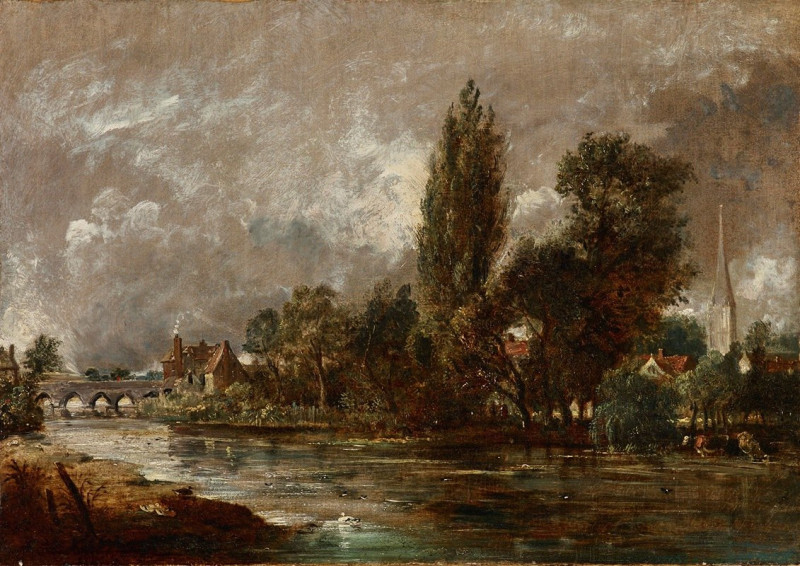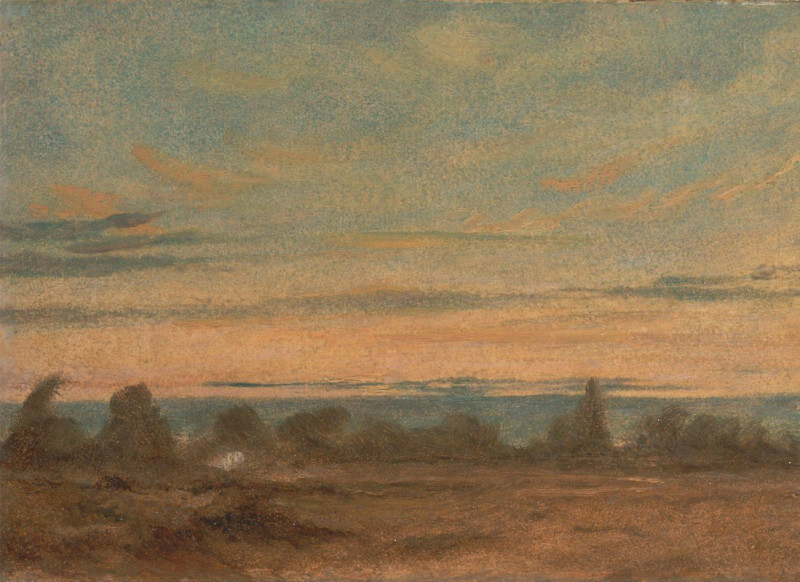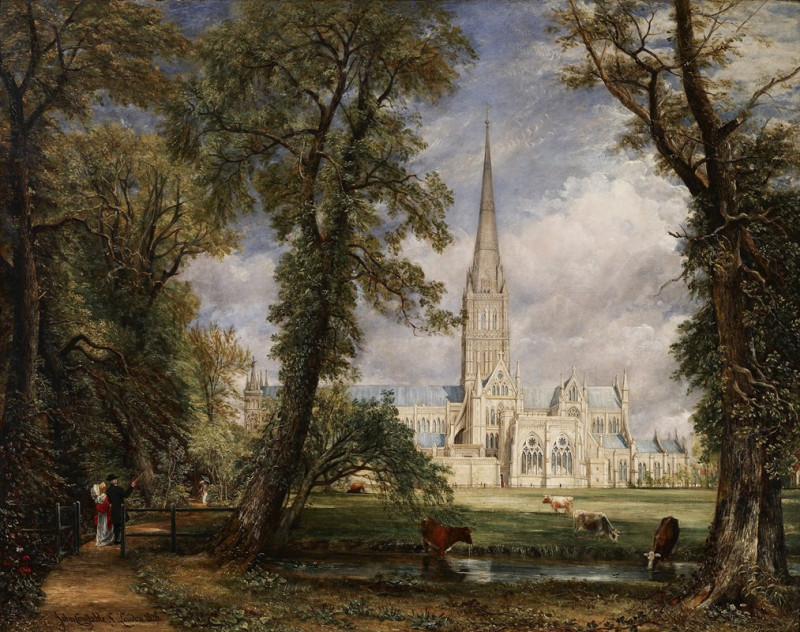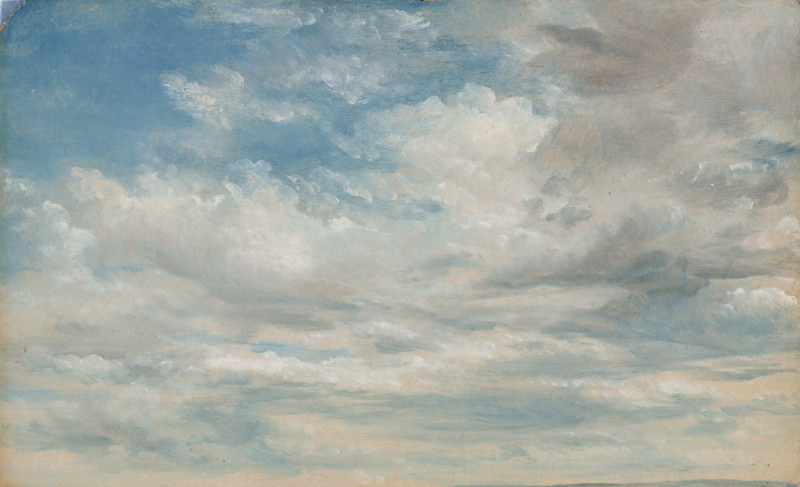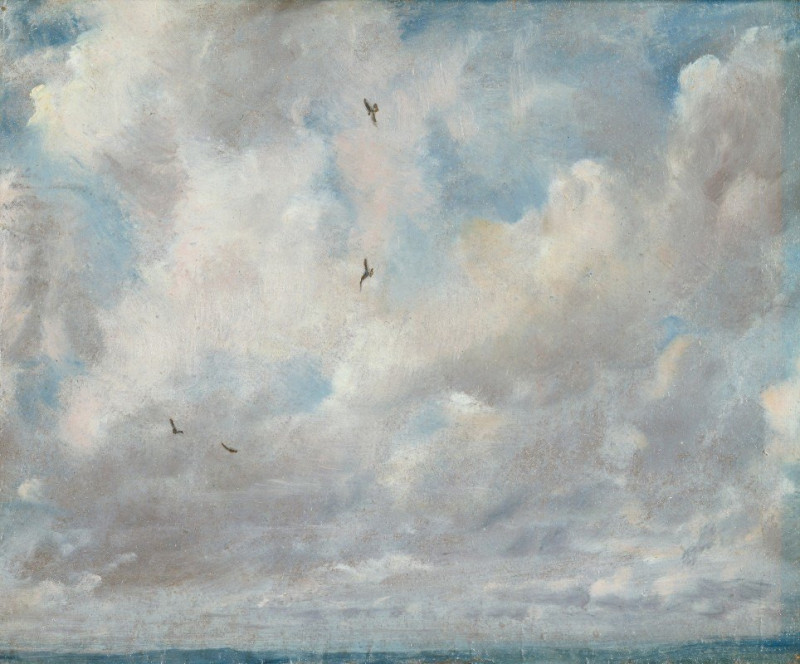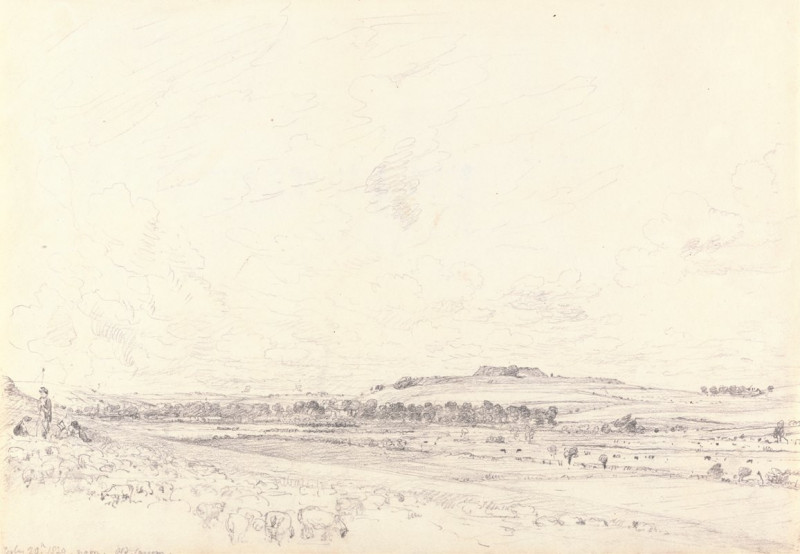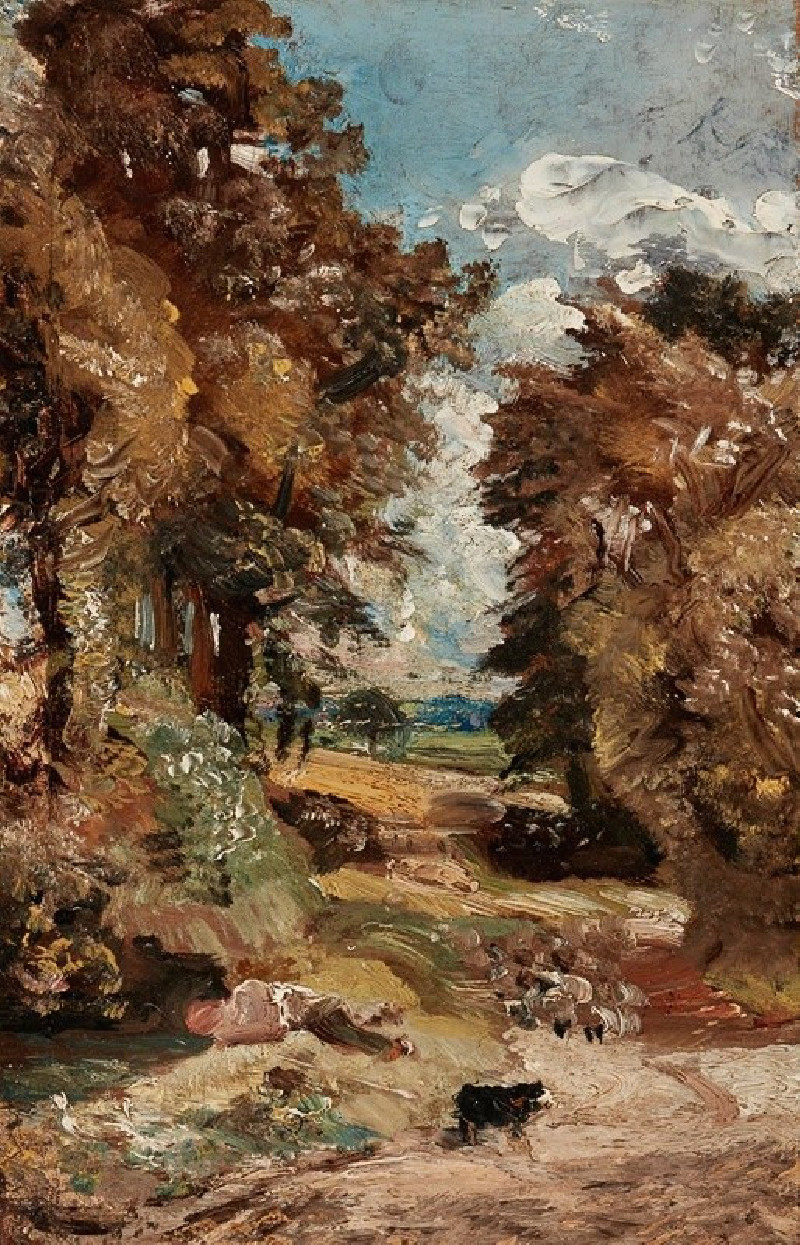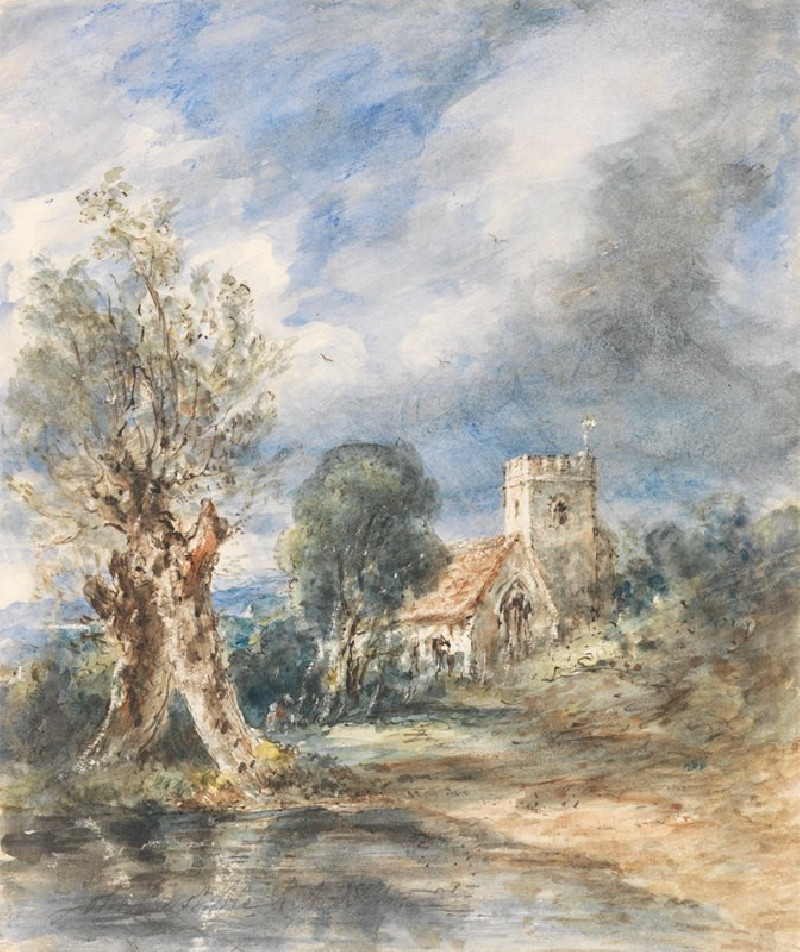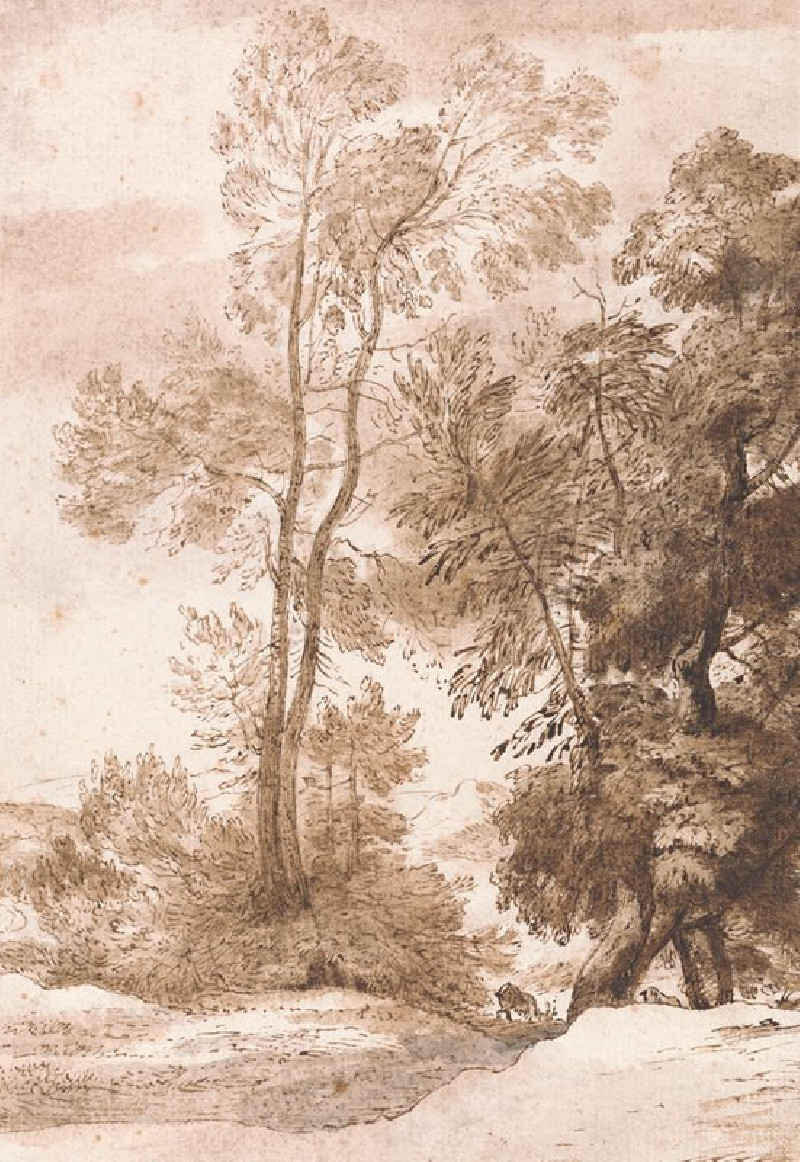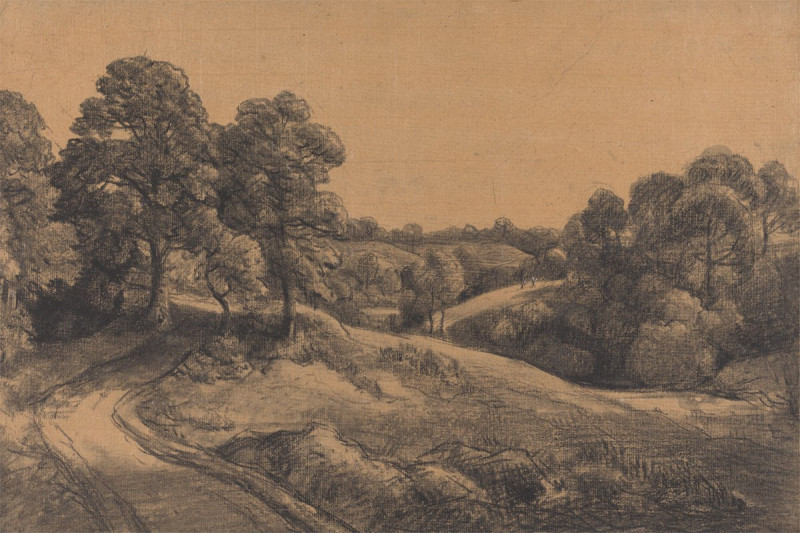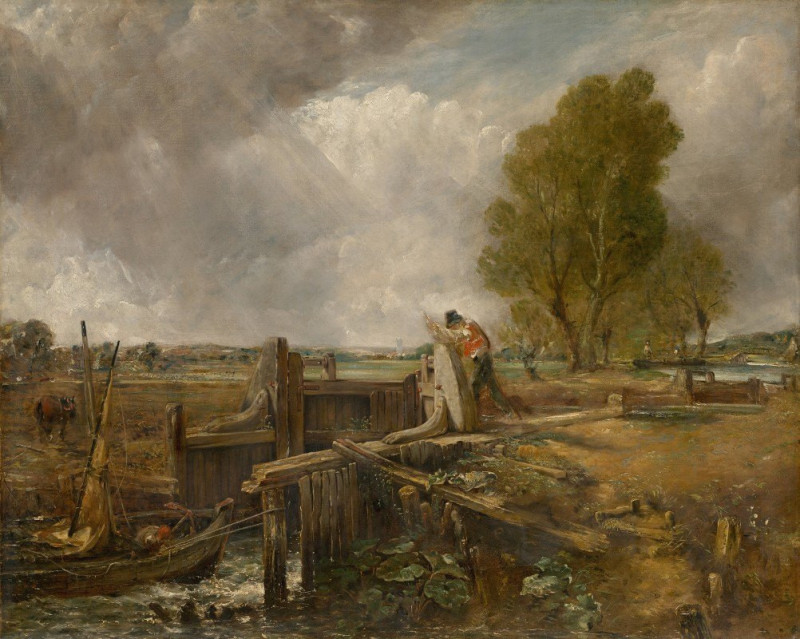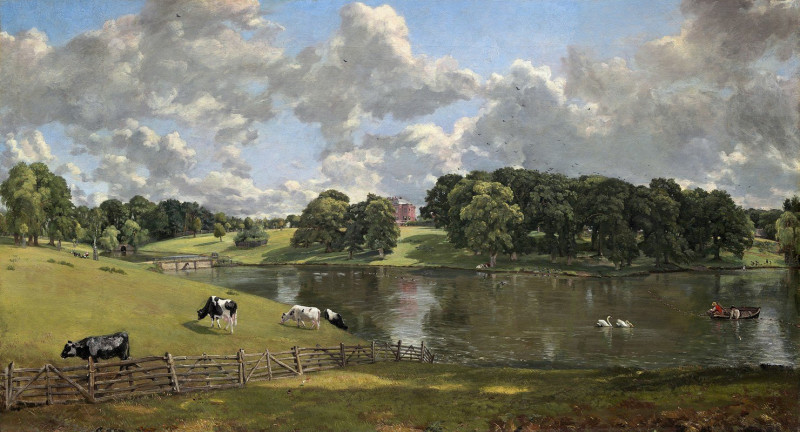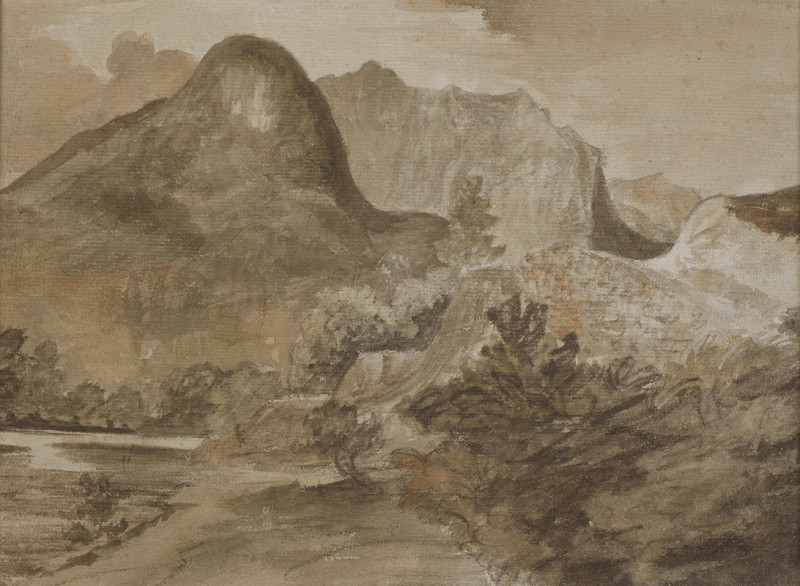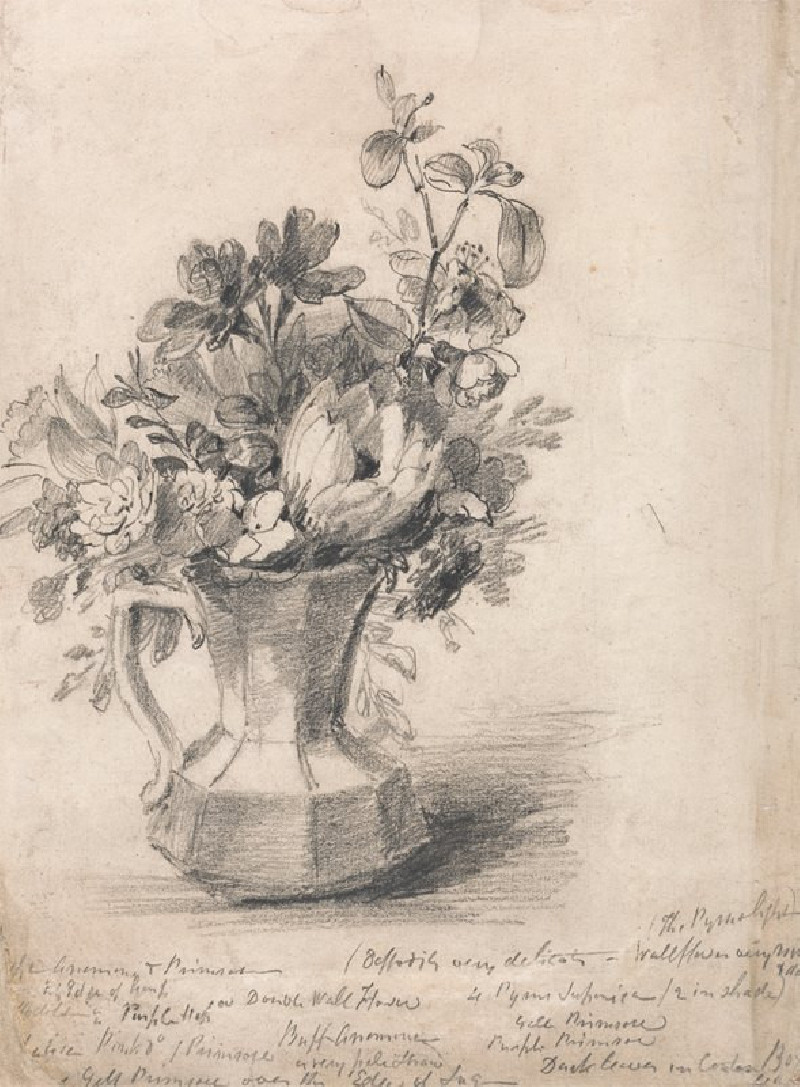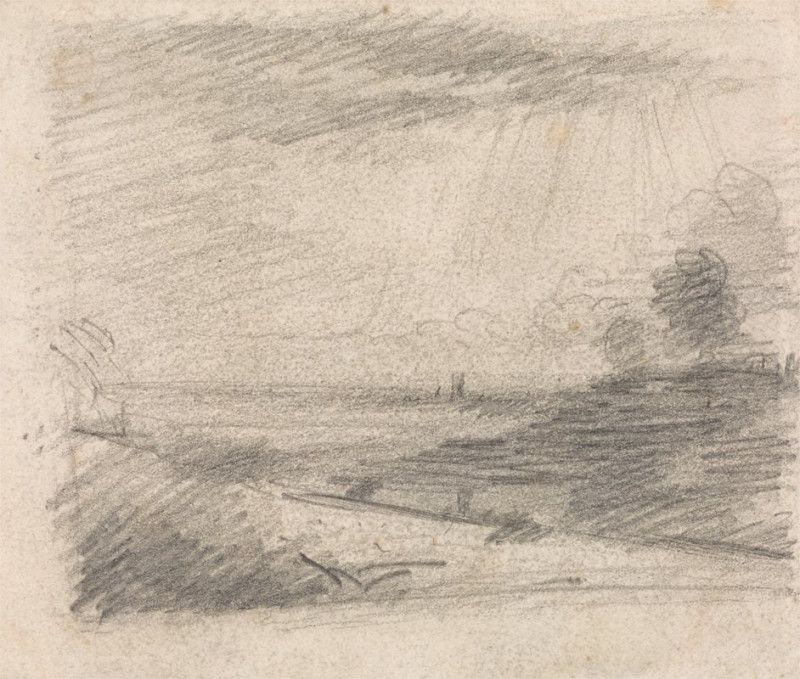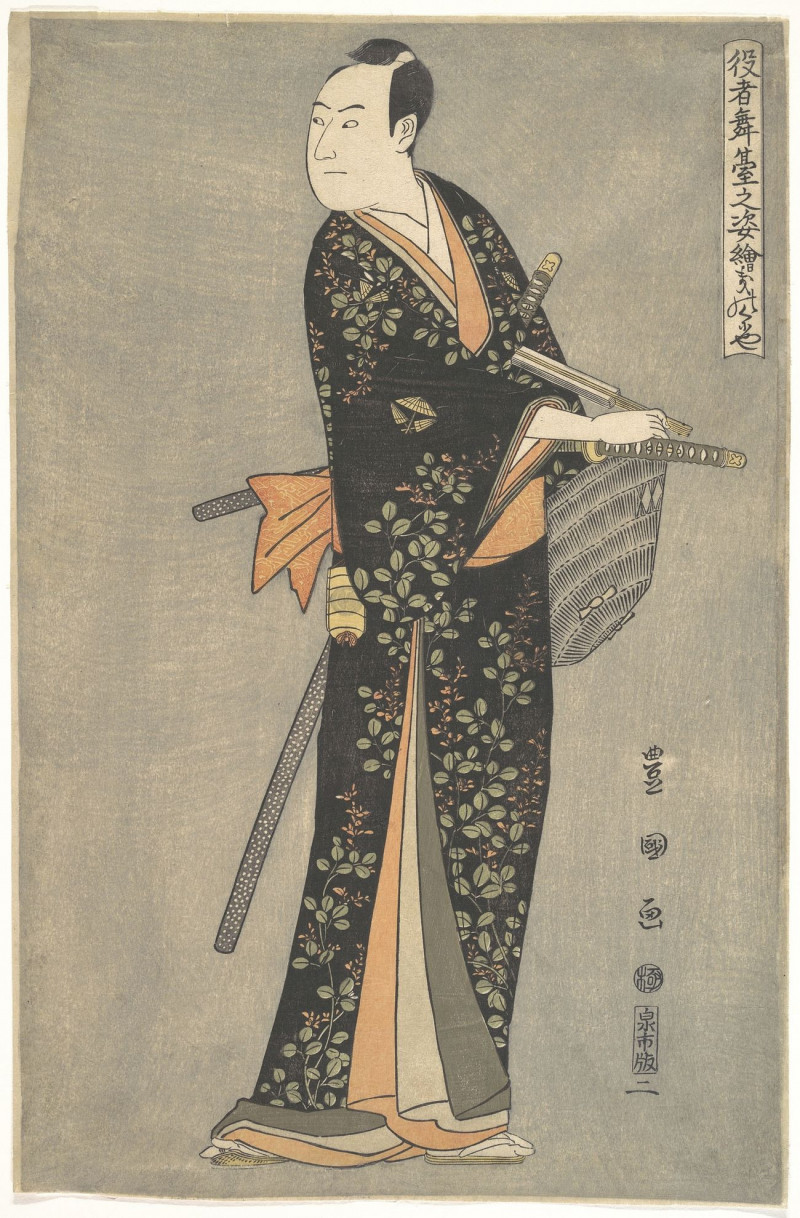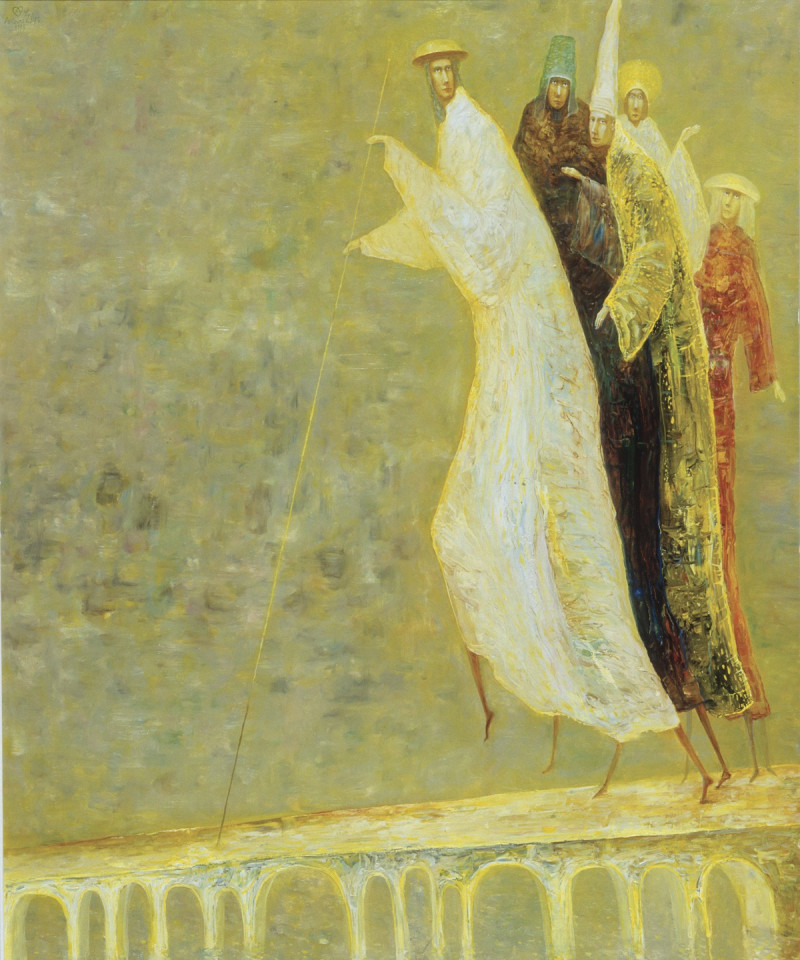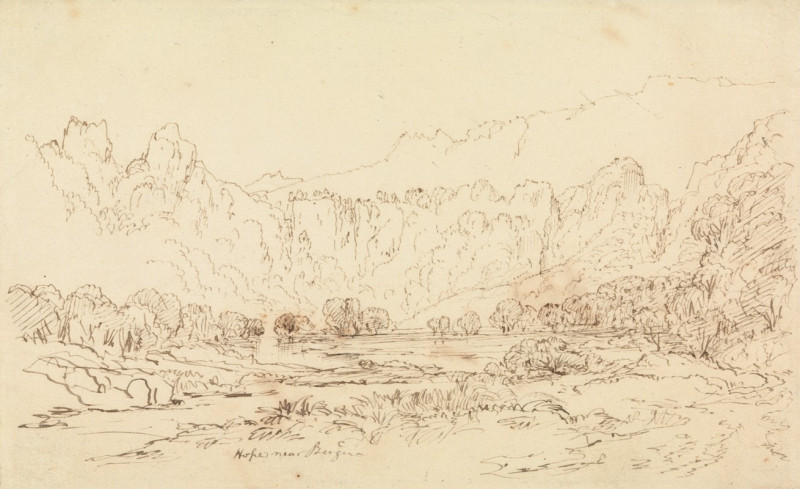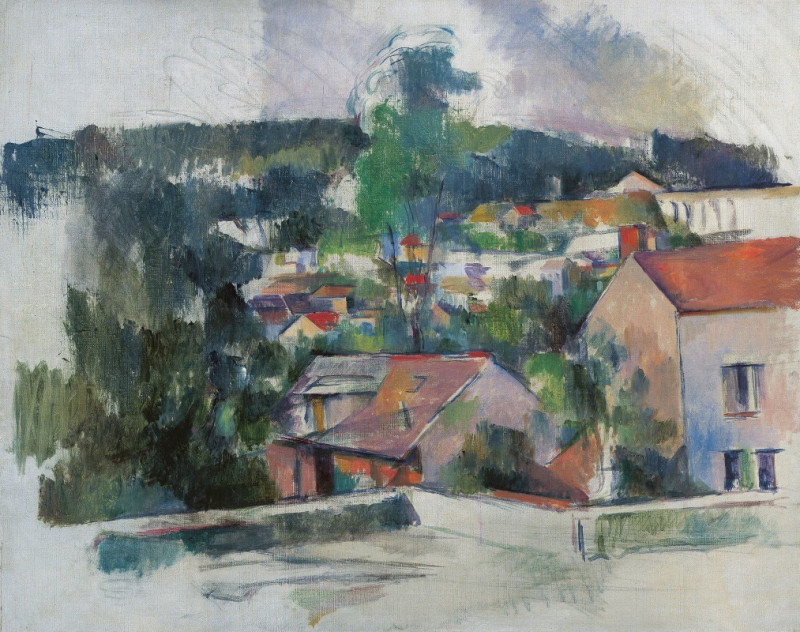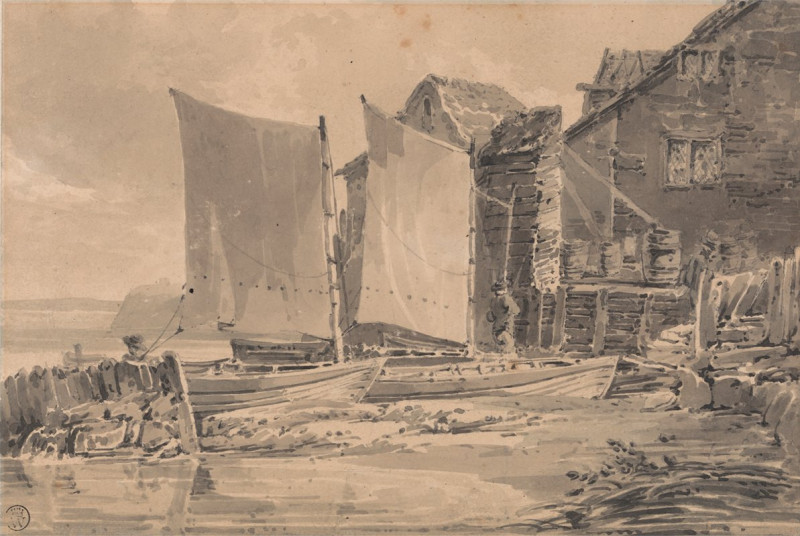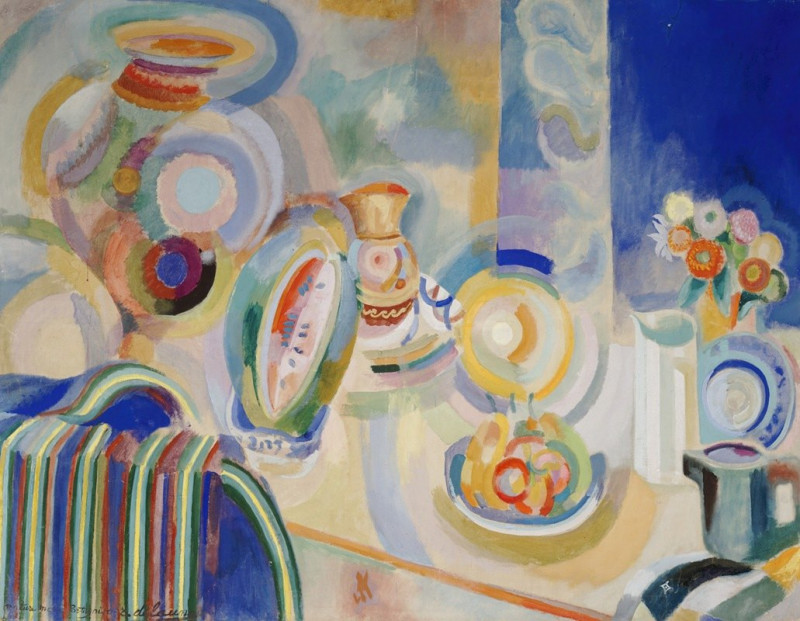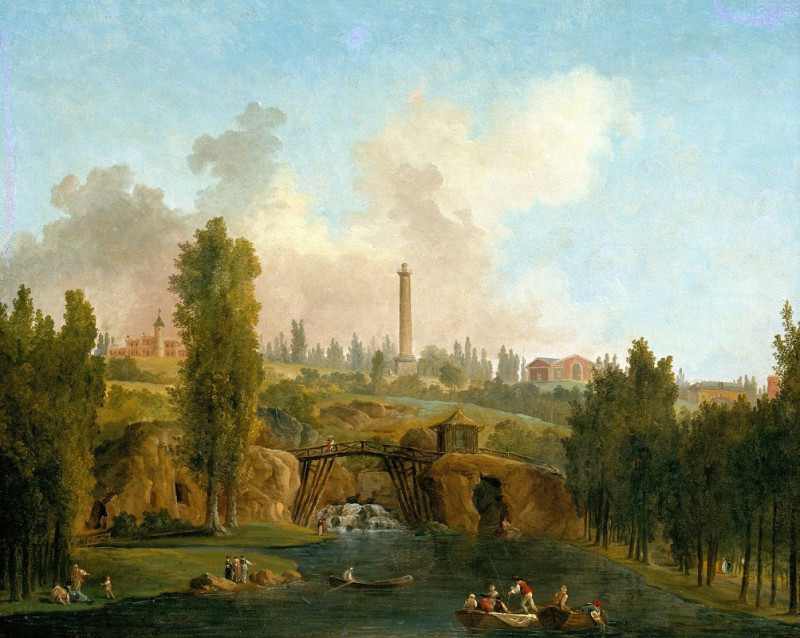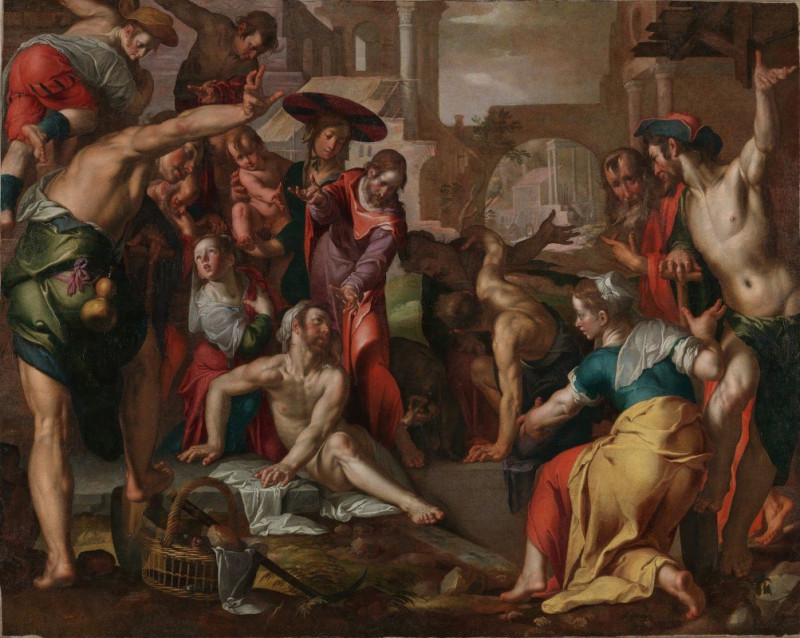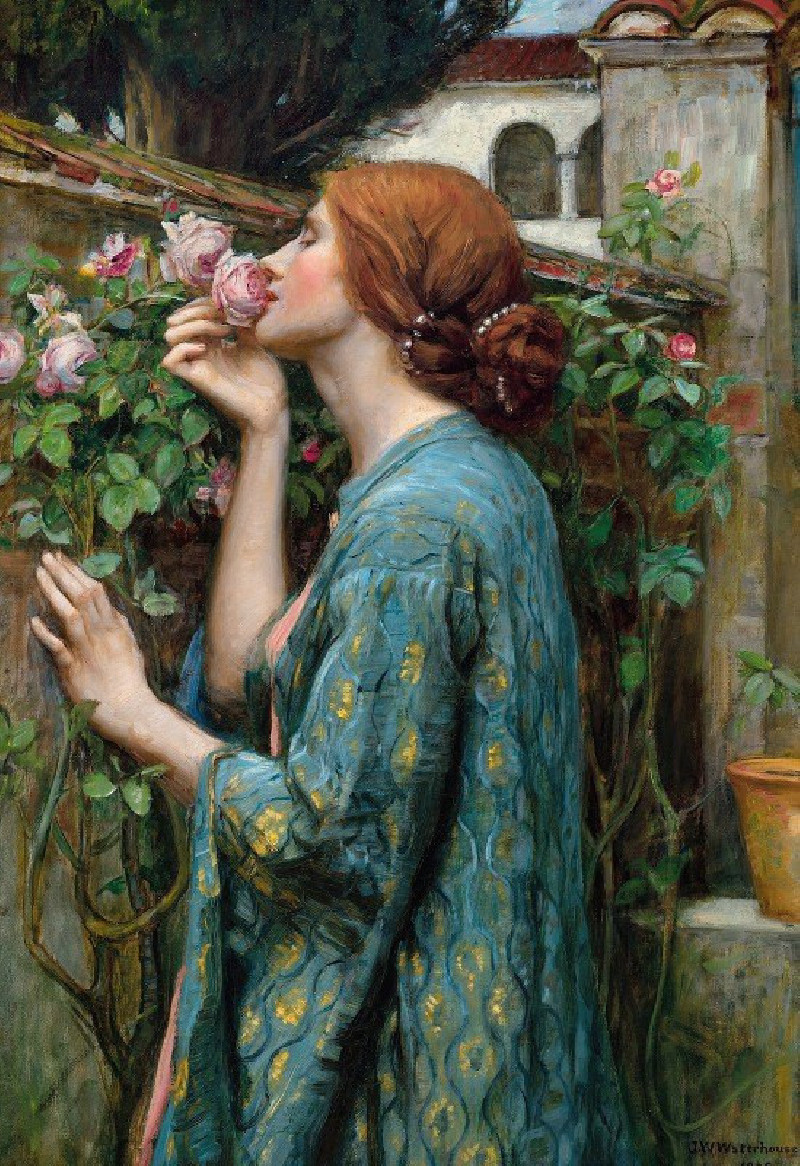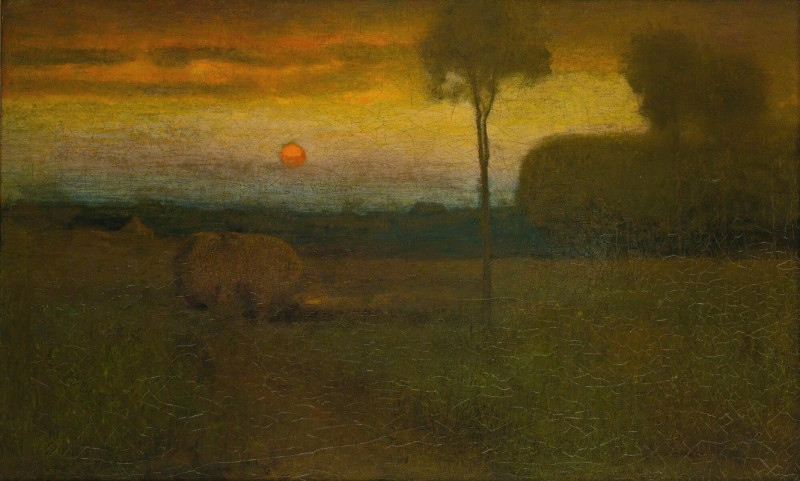Cloud Study – Stormy Sunset (1821-1822)
Technique: Giclée quality print
Recommended by our customers
More about this artwork
John Constable, renowned for his vivid and expressive landscape paintings, presents a dramatically compelling sky in "Cloud Study – Stormy Sunset," painted between 1821 and 1822. This piece captures an evocative moment of natural splendor, depicting the turbulent emotions of the sky with a mastery that is quintessentially Constable.The painting is distinguished by its moody and dynamic clouds, swirled in hues of dark grays and somber browns, which contrast starkly against patches of a soft, glowing white and subtle blues breaking through them. This interplay of light illustrates the fleeting, transient moments just before sunset, where the storm's ominous presence is pierced by the lingering resilience of sunlight. It is this contrast that gives the painting a breathtaking depth and a stormy, almost palpable tension.The lower section of the canvas suggests a distant horizon, faintly lit by the sun's escaping rays, which stretch across the landscape and provide a glint of warmth to the otherwise cool palette. Constable's brushwork here is loose and energetic, which conveys a sense of movement and spontaneity. Each stroke plays a part in creating the overall mood of a landscape caught between the tempestuous weather and the fading day."Cloud Study – Stormy Sunset" is not just a visual study of the sky but also an emotional rendering that engages the viewer to feel the stir of the wind and the chill in the air. It reflects Constable's deep fascination with the sky and his dedicated observation of its changing expressions, which he considered the "keynote" to landscape painting.
Delivery
Returns
John Constable RA was an English landscape painter in the Romantic tradition. Born in Suffolk, he is known principally for revolutionising the genre of landscape painting with his pictures of Dedham Vale, the area surrounding his home – now known as "Constable Country" – which he invested with an intensity of affection. "I should paint my own places best", he wrote to his friend John Fisher in 1821, "painting is but another word for feeling".

